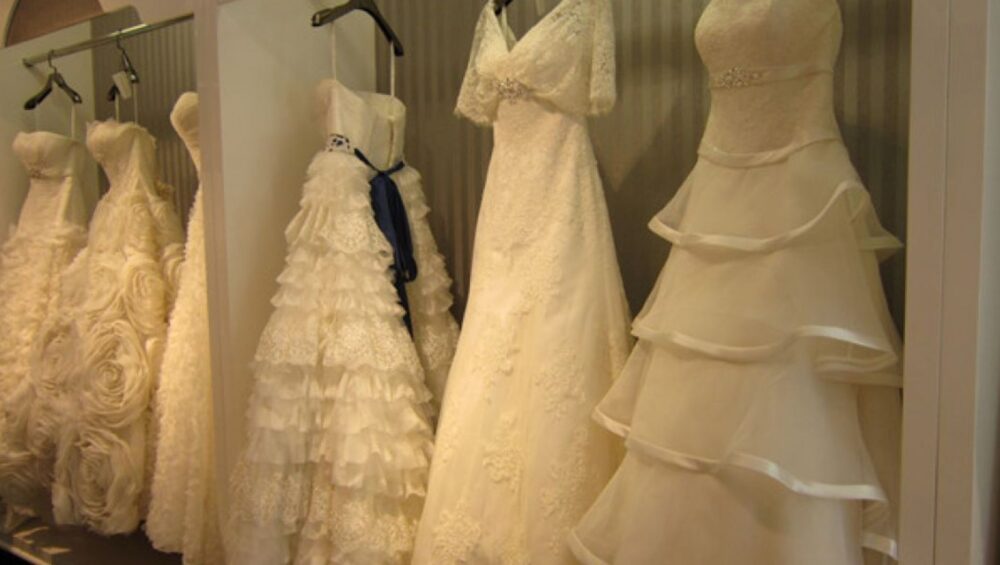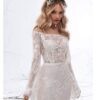Introduction:
Selecting the perfect Gown for Wedding is one of the most memorable and significant decisions a bride will make for her special day. Among the myriad of considerations, understanding wedding gown fabrics is essential in bringing the bride’s vision to life. From luxurious silks to delicate laces, the choice of fabric plays a pivotal role in determining the style, comfort, and overall aesthetic of the gown. Let’s explore the essential guide to wedding gown fabrics, empowering brides to make informed decisions as they embark on their journey to find the dress of their dreams.

The Elegance of Silk:
Silk is synonymous with luxury and elegance, making it a popular choice for wedding gowns. Known for its lustrous sheen and soft drape, silk exudes timeless sophistication and grace. Varieties such as silk satin, silk charmeuse, and silk organza offer brides a range of options to suit their personal style and silhouette preferences. While silk is coveted for its sumptuous texture and exquisite finish, it is important to consider its delicate nature and potential for wrinkling.
The Romance of Lace:
Lace has long been associated with romance and femininity, adding a touch of ethereal charm to wedding gowns. From delicate Chantilly lace to intricate Alençon lace, each variety boasts its own unique texture and design. Lace can be used as an overlay for the bodice and sleeves or incorporated into the gown’s intricate detailing. Whether brides opt for vintage-inspired motifs or contemporary patterns, lace adds a sense of timeless elegance and allure to wedding gowns.
The Versatility of Tulle:
Tulle is a lightweight, sheer fabric commonly used in wedding gown skirts and overlays. Its airy texture and voluminous drape create a sense of whimsy and romance, making it a favorite among brides seeking a fairytale-inspired look. Tulle can be layered for added fullness or used sparingly to create subtle movement and dimension. With its versatility and softness, tulle complements a variety of bridal styles, from classic ball gowns to modern A-line silhouettes.
The Allure of Organza:
Organza is a crisp, lightweight fabric characterized by its subtle sheen and structured drape. Its translucency and body make it ideal for creating voluminous skirts and dramatic silhouettes. Whether used alone or layered with other fabrics, organza adds an element of sophistication and glamour to wedding gowns. Brides can choose from a range of organza varieties, including silk organza and polyester organza, each offering its own distinct qualities and visual appeal.
Conclusion:
As brides embark on the journey to find their perfect wedding gown, understanding the nuances of fabric selection is paramount. From the luxurious elegance of silk to the romantic allure of lace, each fabric embodies its own unique characteristics and charm. By considering factors such as texture, drape, and durability, brides can make informed decisions that align with their personal style and vision for their special day. With the bride’s guide to wedding gown fabrics as a companion, brides are empowered to navigate the world of bridal fashion with confidence and grace, ensuring that their wedding gown is a reflection of their love, beauty, and individuality.






